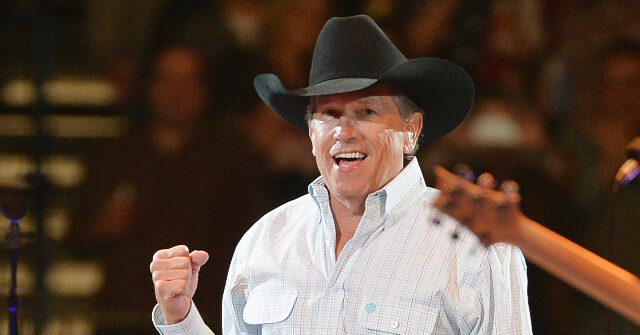In a recent concert at Allegiant Stadium in Las Vegas, country music icon George Strait showcased what has become known as the “Trump dance,” a signature move popularized by President-elect Donald Trump during his campaign. The performance marked another instance of prominent figures adopting this dance, which is typically performed to the tune of the Village People’s classic “Y.M.C.A.” Trump originally utilized this catchy choreography at his rallies, turning it into a recognizable cultural phenomenon. As a result, Strait’s rendition not only entertained the crowd but also underscored the wider cultural acceptance of Trump’s dance moves within various circles.
Since Trump’s election victory, the Trump dance has gained traction among sports and entertainment figures, reflecting an interesting blend of politics and popular culture. Several NFL players have taken to performing the dance after scoring touchdowns. Noteworthy mentions include Nick Bosa of the San Francisco 49ers, Za’Darius Smith of the Detroit Lions, Calvin Ridley with the Tennessee Titans, and Brock Bowers representing the Las Vegas Raiders. Their enthusiastic displays indicate a level of camaraderie and a willingness to embrace a figure who has been polarizing in many respects. This cultural crossover has been further amplified by its appearance in high-stakes sporting events, demonstrating Trump’s influence across diverse entertainment sectors.
In addition to football stars, UFC champion Jon Jones also engaged in the Trump dance during a high-profile match at Madison Square Garden, where Trump was in attendance. This crossover between sports and politics illustrates how Trump’s persona has permeated American culture, extending even to the world of UFC, which is often characterized by its larger-than-life personalities and vibrant fan engagement. Jones’ decision to dance in celebration shows an alignment with a political figure that has both supporters and detractors, thus highlighting the complex relationship between athletes and political figures in contemporary society.
Moreover, the international stage has not been exempt from this trend. Argentina’s President Javier Milei performed the Trump dance during his visit to Mar-a-Lago, emphasizing the global reach of Trump’s impact and the dance’s symbolism as a representation of his political style. The dance has transcended its origins in American politics to become a form of cultural expression adopted by leaders and figures beyond U.S. borders. It showcases how political figures may seek to resonate with or capitalize on popular trends associated with Trump, further promoting his influence as a global figure.
While some left-leaning media personalities, including ABC’s Jimmy Kimmel, have lampooned the Trump dance, the broader acceptance of this cultural phenomenon illustrates a growing divide in public perception. Despite attempts to disparage the dance, the Village People’s lead singer, Victor Willis, has publicly endorsed Trump’s use of “Y.M.C.A.” He credited Trump with earning an “A” for his performance, signifying a notable shift in how cultural icons respond to political figures. Willis’ support arguably represents a crack in the often-monolithic viewpoint of the entertainment industry regarding Trump, suggesting that his cultural presence has extended beyond mere politics to a shared cultural experience enjoyed across the spectrum.
The emergence of the Trump dance reflects a multifaceted interaction between politics, culture, and identity in today’s society. George Strait’s performance and the subsequent reactions from various public figures indicate not only a fascination with Trump as a character but also a broader cultural dialogue about how political figures can have an impact on mainstream entertainment. As influential voices from sports, entertainment, and politics continue to embrace this dance, it raises questions about the evolving nature of cultural markers and the ways in which they can bridge divides or highlight societal differences. This cultural moment surrounding the Trump dance has provoked conversations about authenticity, influence, and the interplay between performance and political identity in an increasingly fragmented and polarized society.

